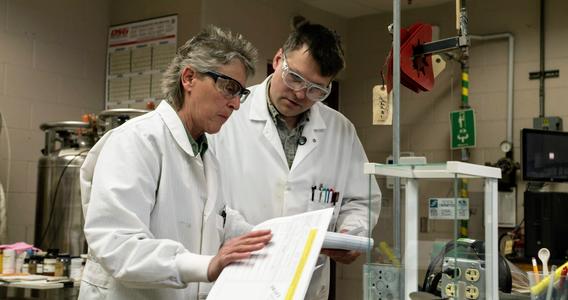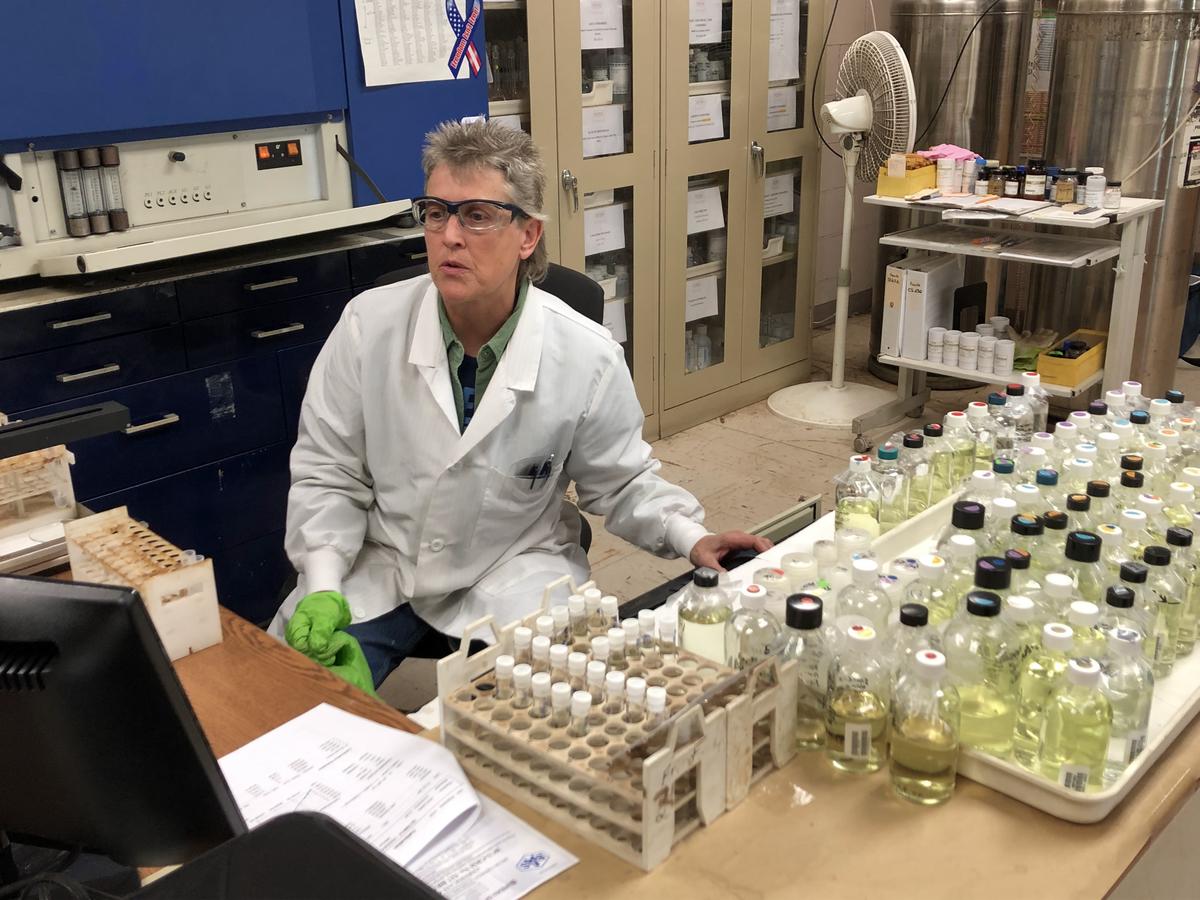“It’s never only been about iron ore and mining,” said Julie Mutchler said of her 31-year career at NRRI Coleraine.
Happy to find a job opening in 1991 at NRRI’s facility on the Iron Range, Mutchler got the hands-on, outdoors work she craved. She ran the forklifts, front-end loaders and drove the dump truck. There was a lot of material to be moved, rock samples to be split and barrels of ore to be decanted.
“This wasn’t an intentional career path for me, but it sure has been fun,” said Mutchler who had previously worked with the U.S. Forest Service and at the U.S. Bureau of Mines. “The diversity of the projects over the years and global clients are so interesting. I’m one of the cogs in the wheel that keeps our clients satisfied.”
Today, she’s supervisor and manager of the Coleraine Analytical Labs with a team of three who do all the chemical analyses for client projects. She also coordinates and documents chemicals for hazardous waste removal and is trained to use radiation equipment to test mineral samples for contaminants.
Mutchler’s path to the “Chem Lab” has taken her from the Batch Mineral Processing Lab – running the Davis Tubes, wet screening, filter presses and liberation grinding equipment – where small batches of iron ore are tested for local taconite plants. Somewhere along the way, she started filling in as needed in the Chem Lab running titrations and borate fusions to determine chemical compositions of ore samples. And that remained Mutchler’s focus for most of her career.
With some new projects, new equipment is onboarded, so learning to operate analytical instrumentation became an additional role for her. And she’s the main operator of an important mass spectrometer that uses inductively coupled plasma to ionize rock samples to detect minerals in ore samples.
“Eventually, as folks retired and moved on, I ended up learning to operate all the analytical equipment, like the fluxer, auto titrators and the carbon/sulfur units,” said Mutchler. “I get weekly jaunts to our Haz Waste area and Mineralogy Lab, but mostly I’m dedicated to the Chem Lab.”

Being part of the team that is delivering research for Minnesota’s Iron Range industries – providing a boost to the economy and community – is especially satisfying for Mutchler.
“These are folks right down the road from our lab who benefit from the work we’re doing,” she said. “And that speaks directly to NRRI’s Charter and Mission. I’m proud to be part of an organization that cares about Minnesota’s resources and has a forward focus on sustainability.”
Broad Support
Mutchler appreciates the collaborations across the University system that has made her workload more effective and efficient. When a major effort went into the Coleraine Labs clean-up and modernization, the Environmental Health and Safety Office and Hazardous Materials Team from the Twin Cities campus were integral partners. She also appreciates getting help with computer dilemmas and equipment software integration from NRRI’s Information Technology team.
And when the lab onboarded a new, state-of-the-art Automated Iron Titration unit, it took a team of NRRI expertise to get it in place and optimized – from organic chemists to statisticians to the Quality/Safety team.
“This equipment is tangible evidence of NRRI’s commitment to quality and delivering the best data possible,” said Mutchler. “It started when we identified legacy iron procedures having a quality flaw with a high bias data output for iron. This sort of internal upgrade doesn’t happen without funding and support from leadership to carry this whole deal through.”
Off Hours
Since her job evolved to more indoor work, Mutchler enjoys spending her off work hours outdoors – especially her own backyard, which is adjacent to 1,200 acres of municipal forest, abundant with wildlife and bike trails. At home, she enjoys lounging in her lawn chair with a lazy cat in her lap or bicycling, bird watching and gardening.
“When the family comes around, we congregate at our cabin, which is only a block away,” she said. “There, it’s all about fishing contests, campfire breakfasts and coffee concoctions. We tell the kids, what happens at the cabin, stays at the cabin!”
